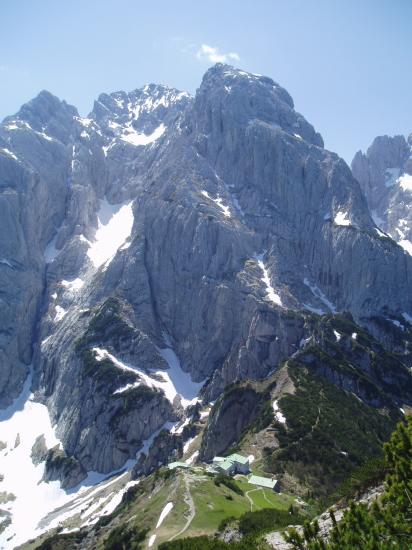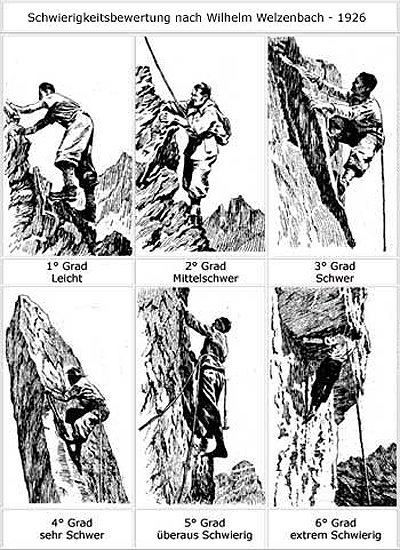|
Feldberg (Kaiser)
The Feldberg is a mountain, {{Höhe, 1813, AT, link=true, in the Kaiser range in the Austrian state of Tyrol. Its summit may be ascended on an easy mountain path either directly from Griesenau or via the Stripsenjochhaus hut and the Stripsenkopf The Stripsenkopf is a mountain Bundesamt für Eich- und Vermessungswesen Österreich: Austrian Map online (Austrian map series 1:50,000)'. in the Kaisergebirge range of the Northern Limestone Alps in Austria. It belongs to the ''Zahmer Kaiser'' .... External links Entry about the mountain tour One-thousanders of Austria Mountains of the Alps Mountains of Tyrol (state) Kaiser Mountains ... [...More Info...] [...Related Items...] OR: [Wikipedia] [Google] [Baidu] |
Fleischbank (Kaisergebirge)
The Fleischbank is a 2,187-metre-high mountain in the Wilder Kaiser range in the Northern Limestone Alps in Austria, east of Kufstein in the Tyrol. The mountain is one of the well-known climbs in the Northern Limestone Alps. The starting point for many easy to difficult climbing tours is the Stripsenjochhaus The Stripsenjochhaus is an Alpine club hut owned by the Kufstein branch of the Austrian Alpine Club in the Kaisergebirge mountain range in the Austrian state of Tyrol. Location The house lies on the Stripsenjoch which forms a bridge between the ... belonging to the ÖAV. External links Climbing routes on the Fleischbank Mountains of the Alps Mountains of Tyrol (state) Kaiser Mountains Two-thousanders of Austria {{Tyrol-geo-stub ... [...More Info...] [...Related Items...] OR: [Wikipedia] [Google] [Baidu] |
Stripsenjoch
The Stripsenjoch is a small mountain pass (German: ''Joch'' or ''Pass'') in Austria with a height of , which forms a bridge between the mountain ridges of the ''Zahmer Kaiser'' and the ''Wilder Kaiser'', the two halves of the Kaisergebirge. In addition it marks the watershed between the Kaisertal in the west (towards Kufstein) and the Kaiserbach valley in the east. It derives its name from the neighbouring peak of the Stripsenkopf (1807 m). At the same time the Stripsenkopf is the local mountain (''Hausberg'') for the Stripsenjochhaus, an Alpine club hut belonging to the Austrian Alpine Club (''Österreichischer Alpenverein''). The Stripsenjoch is most easily reached on foot by a ca. 1 hour walk from the Griesner Alm at 989 m. To avoid the toll road, the path may be taken directly from Griesenau (727 m) and the walk takes around 3 hours. The walk from Kufstein (500 m) needs a good 4 hours. See also * List of highest paved roads in Europe * List of mountain passes This is a list ... [...More Info...] [...Related Items...] OR: [Wikipedia] [Google] [Baidu] |
Kaiser Mountains
The Kaiser Mountains (german: Kaisergebirge, meaning ''Emperor Mountains'') are a mountain range in the Northern Limestone Alps and Eastern Alps. Its main ridges – are the Zahmer Kaiser and south of it the Wilder Kaiser. The mountains are situated in the Austrian province of Tyrol (state), Tyrol between the town of Kufstein and the town of St. Johann in Tirol. The Kaiser Mountains offer some of the loveliest scenery in all the Northern Limestone Alps.Kev Reynolds, Reynolds, Kev (2005). ''Walking in the Alps'', 2nd ed., Cicerone, Singapore, p. 430, . Divisions The Kaiser Mountains are divided into the Wilder Kaiser or Wild Kaiser chain of mountains, formed predominantly of bare limestone rock, and the Zahmer Kaiser ("Tame Kaiser"), whose southern side is mainly covered by mountain pine. These two mountain ridges are linked by the 1,580-metre-high Stripsenjoch pass, but are separated in the west by the valley of Kaisertal and in the east by the Kaiserbach valley. In total th ... [...More Info...] [...Related Items...] OR: [Wikipedia] [Google] [Baidu] |
Tyrol (Bundesland)
Tyrol (; german: Tirol ; it, Tirolo) is a state (''Land'') in western Austria. It comprises the Austrian part of the historical Princely County of Tyrol. It is a constituent part of the present-day Euroregion Tyrol–South Tyrol–Trentino (together with South Tyrol and Trentino in Italy). The capital of Tyrol is Innsbruck. Geography The state of Tyrol is separated into two parts, divided by a strip. The larger territory is called North Tyrol (''Nordtirol'') and the smaller area is called East Tyrol (''Osttirol''). The neighbouring Austrian state of Salzburg stands to the east, while on the south Tyrol has a border with the Italian province of South Tyrol ( Trentino-Alto Adige/Südtirol) which was part of the Austro-Hungarian Empire before the First World War. With a land area of , Tyrol is the third-largest state in Austria. Tyrol shares its borders with the federal state of Salzburg in the east and Vorarlberg in the west. In the north, it adjoins to the German ... [...More Info...] [...Related Items...] OR: [Wikipedia] [Google] [Baidu] |
Austria
Austria, , bar, Östareich officially the Republic of Austria, is a country in the southern part of Central Europe, lying in the Eastern Alps. It is a federation of nine states, one of which is the capital, Vienna, the most populous city and state. A landlocked country, Austria is bordered by Germany to the northwest, the Czech Republic to the north, Slovakia to the northeast, Hungary to the east, Slovenia and Italy to the south, and Switzerland and Liechtenstein to the west. The country occupies an area of and has a population of 9 million. Austria emerged from the remnants of the Eastern and Hungarian March at the end of the first millennium. Originally a margraviate of Bavaria, it developed into a duchy of the Holy Roman Empire in 1156 and was later made an archduchy in 1453. In the 16th century, Vienna began serving as the empire's administrative capital and Austria thus became the heartland of the Habsburg monarchy. After the dissolution of the H ... [...More Info...] [...Related Items...] OR: [Wikipedia] [Google] [Baidu] |
Griesenau
Kirchdorf in Tirol is a municipality in the Kitzbühel district in the Austrian state of Tyrol located north of Kitzbühel as well as north of Sankt Johann in Tirol at the Kitzbühler Ache. By area, Kirchdorf is the second largest municipality in the district. The village obtained its name from an old church which was built in the 8th century. The main sources of income are agriculture and tourism. Geography Kirchdorf lies in the Leukental valley, near St. Johann in Tirol. The parish consists of several hamlets and scattered settlements. A large part of the Wilder Kaiser mountain ridge also falls within the parish boundary. Kirchdorf is the second largest parish in Kitzbühel district by area. Subdivisions Bicheln, Einwall, Erpfendorf (village with its own church and school), Erpfendorf-Dorf, Erpfendorf-Wald, Fabrik, Furth, Gasteig (also with its own school), Griesenau, Habach, Haberberg, Hinterberg, Huberhöhe, Jageregg, Kaiserbachtal, Kirchdorf-Dorf, Moosen, Litzlfelden, ... [...More Info...] [...Related Items...] OR: [Wikipedia] [Google] [Baidu] |
Stripsenjochhaus
The Stripsenjochhaus is an Alpine club hut owned by the Kufstein branch of the Austrian Alpine Club in the Kaisergebirge mountain range in the Austrian state of Tyrol. Location The house lies on the Stripsenjoch which forms a bridge between the ridges of the Zahmer Kaiser and Wilder Kaiser at the head of the Kaiserbachtal and Kaisertal valleys at a height of 1,577 m. Reynolds, Kev (2009). ''Walking in Austria'', 1st ed., Cicerone, Milnthorpe, p. 266. . The Stripsenjochhaus therefore occupies a very central position and is often referred to as the turntable of the Kaisergebirge. Facilities With 100 beds and 60 dormitory places the Stripsenjochhaus is the largest hut in the Kaisergebirge and is fully staffed from mid-May to mid October. Although it is invariably busy in the summer, it is a good place to stay the night. Kev Reynolds's guide, ''Walking in Austria'', describes it thus: ''"Given good conditions the alpenglow which flushes the soaring backdrop mountain walls with hue ... [...More Info...] [...Related Items...] OR: [Wikipedia] [Google] [Baidu] |
Climbing Grade
In rock climbing, mountaineering, and other climbing disciplines, climbers give a grade to a climbing route or boulder problem, intended to describe concisely the difficulty and danger of climbing it. Different types of climbing (such as sport climbing, bouldering or ice climbing) each have their own grading systems, and many nationalities developed their own, distinctive grading systems. There are a number of factors that contribute to the difficulty of a climb, including the technical difficulty of the moves, the strength, stamina and level of commitment required, and the difficulty of protecting the climber. Different grading systems consider these factors in different ways, so no two grading systems have an exact one-to-one correspondence. Climbing grades are inherently subjective.Reynolds Sagar, Heather, 2007, ''Climbing your best: training to maximize your performance'', Stackpole Books, UK, 9. They may be the opinion of one or a few climbers, often the first ascensi ... [...More Info...] [...Related Items...] OR: [Wikipedia] [Google] [Baidu] |
Mountain Path
Ridgeways are a particular type of ancient road that exploits the hard surface of hilltop ridges for use as unpaved, zero-maintenance roads, though they often have the disadvantage of steeper gradients along their courses, and sometimes quite narrow widths. Before the advent of turnpikes or toll roads, ridgeway trails continued to provide the firmest and safest cart tracks. They are generally an opposite to level, valley-bottom, paved roads, which require engineering work to shore up and maintain. Unmaintained valley routes may require greater travelling distances than ridgeways. Prehistoric roads in Europe often variously comprised stretches of ridgeway above the line of springs, sections of causeway through bog and marsh, and other trackways of neither sort which crossed flat country. A revival of interest in ancient roads and recreational walking in the 19th century brought the concept back into common use. Some ancient routes, in particular The Ridgeway National Trail of south ... [...More Info...] [...Related Items...] OR: [Wikipedia] [Google] [Baidu] |
Stripsenkopf
The Stripsenkopf is a mountain Bundesamt für Eich- und Vermessungswesen Österreich: Austrian Map online (Austrian map series 1:50,000)'. in the Kaisergebirge range of the Northern Limestone Alps in Austria. It belongs to the ''Zahmer Kaiser'' group and its summit is covered in mountain pine. Location The Stripsenkopf rises immediately north of the Stripsenjoch saddle, which separates the peak from the ''Wilder Kaiser''. Its unique location makes the Stripsenkopf a very popular destination with its commanding view of the rock faces on the Karlspitzen and Totenkirchl. From the Stripsenkopf a wide ridge runs northeast over to the ''Feldberg'' (1,814 m), a frequently used climbing path heading along it toward Griesenau. On the west side the Stripsenkopf falls away into the Kaisertal valley, its slopes covered in mountain pine and woods. To the southeast its steep flanks and gullies drop into the Kaiserbach valley. Routes Numerous signposted routes lead to the Stripsenkopf. ... [...More Info...] [...Related Items...] OR: [Wikipedia] [Google] [Baidu] |
Mountains Of The Alps
This page tabulates only the most prominent mountains of the Alps, selected for having a topographic prominence of ''at least'' , and all of them exceeding in height. Although the list contains 537 summits, some significant alpine mountains are necessarily excluded for failing to meet the stringent prominence criterion. The list of these most prominent mountains is continued down to 2500 m elevation at List of prominent mountains of the Alps (2500–2999 m) and down to 2000 m elevation on List of prominent mountains of the Alps (2000–2499 m). All such mountains are located in either France, Italy, Switzerland, Liechtenstein, Austria, Germany or Slovenia, even in some lower regions. Together, these three lists include all 44 ultra-prominent peaks of the Alps, with 19 ultras over 3000m on this page. For a definitive list of all 82 the highest peaks of the Alps, as identified by the International Climbing and Mountaineering Federation (UIAA), and often referred to as the 'Alpi ... [...More Info...] [...Related Items...] OR: [Wikipedia] [Google] [Baidu] |




